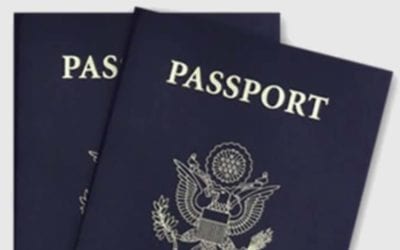Yesterday, an anti-consumer bill about airline pricing was marked up by the House Transportation and Infrastructure Committee. Amazingly, the bill was introduced with bipartisan backing from some of the Democrats’ supposedly top consumer-friendly legislators. The bipartisan cabal of representatives added a most Orwellian name to the bill, “The Airfare Transparency Act of 2014.”
This bill does nothing to help transparency. It only allows airlines to make understanding the full price of travel more difficult.
This bill is the product of intensive lobbying by the airline industry that feels it has been overtaxed. Anyone who has read my columns or is familiar with my work in Washington, DC, knows that I have worked to limit travel tax increases. But, at the same time Travelers United, together with a legion of other organizations such as US Travel, American Society of Travel Agents and the Business Travel Coalition, have worked hard to preserve airline pricing transparency.
The airlines’ best customer is the uninformed customer
After four years of losing regulatory and judicial efforts to repeal a Department of Transportation rule that mandates that airlines tell passengers the full cost of airline travel, airlines are turning to the legislative path. They have managed to pull the wool over the eyes of Representatives who should know better.
Worse, after four years of contentious debate through the rulemaking process and then through District Court and an appeal to the Supreme Court, the House Transportation and Infrastructure Committee shamefully and smugly decided to markup this bill without a word of debate and no input from the very people who elected them or the non-airline travel community.
It seems that this band of lawmakers feels they know better than the thousands of consumers who commented on the rulemaking as it was being formulated and that they know better than the judges at the District Court and the Supreme Court who have upheld the regulation from withering attack from the airlines.
Worse, when I asked directly for them to delay the bill markup and allow for debate about this bill, they refused.
According to aides who helped shape this legislation, having an airfare on one page of a website, taxes on another separate page of the website, and then fees on a pop-up of a website and the final price on a 4th page of a website is more transparent than simply stating the full price to purchase an airline ticket.
No consumer asked for this bill. It only helps airlines confuse customers.
Not surprisingly, they cannot find even one consumer who believes such malarky. Nor, have the airlines over a four-year period been able to find even one passenger who complained about being told the full cost of travel.
In fact, even the airlines claim to want to eventually reveal the full cost of travel, but not upfront where it can be compared with other total travel prices. The airlines want to make comparing prices as difficult as possible. They do not seem to be able to sell a product without resorting to what amounts to “bait and switch” or “drip pricing.”
Airlines want to toss out a super low price, let’s say $65 from Boston to London, and only after three or four pages of web searching reveal that the real lowest cost for a ticket from Boston to London will be $751. That was the situation when the new regulation came into effect. Airlines want to turn the clock back.
Airlines are treated the same as every other business when it comes to taxes and fees
Staffers I spoke with in Congress claim that when they go out to purchase a car or a sofa, they get the price up front and then later find out the taxes and fees. They ask, “Why should the airlines be treated differently?” Taxes should be added on later, just like they are when purchasing a car or a sofa.
The truth is, airlines are treated just like everyone else in the economic universe when it comes to assessment of taxes. All taxes and fees that are added to the end of a purchase for a car or a sofa are state and local taxes and fees. Consumers do not pay any state or local taxes and fees when purchasing an airline ticket.
All federal taxes and fees are already figured into the price that is ultimately taxed by localities when purchasing an automobile or a sofa. When federal taxes and fees are a significant portion of the final price paid by consumers such as when purchasing cigarettes, beer, spirits or gasoline, the federal taxes and fees are rarely broken out and never after first touting the base price without any federal taxes and fees.
Aviation taxes and fees are hidden from the public
This is a flat-out lie promulgated by the airlines. The regulation as it is written and as it has been enforced allows the airlines to list all taxes and fees that they want to list. Nothing is required to be hidden; the base airfare, taxes, fees and other charges must only not be presented more prominently than the total cost of travel.
Airlines have the ability to type out in giant type their complaints about taxes and fees. They can bring in singing and dancing girls announcing that taxes and fees are too high, but when they put the actual airfare, fees and taxes into print the type size must not be more prominent than the final total price.
I have not met a single consumer who has ever complained about being told the full cost of travel. Neither have the airlines.
It is time that consumers let Congress know that they want real transparency, not some figment of transparency that allows the airlines to deceive and mislead the public.
Photo by Carlos Cunha Filho/Flickr Creative Commons

Charlie Leocha is the President of Travelers United. He has been working in Washington, DC, for the past 14 years with Congress, the Department of Transportation, and industry stakeholders on travel issues. He was the first consumer representative to the Advisory Committee for Aviation Consumer Protections appointed by the Secretary of Transportation from 2012 through 2018.



